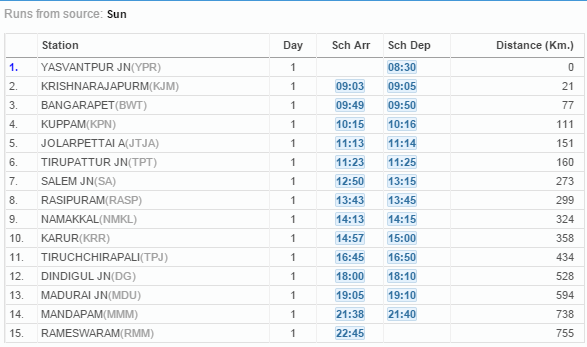Rameswaram - Bangalore Special Train Service Commenced

A new special weekly train service has announced by Indian Railway yesterday (aka: 12/4/2015). This train will be run on Sundays from Bangalore to Rameswaram and will be run on Mondays from Rameswaram to Bangalore. The train comprises one AC chair car, eight second class chair cars, five general second class and two luggage-cum-brake vans. The train Timings and stoppages listed below. Timings and Stoppages : Sundays ( From Yashwanthpur station Bangalore to Rameswaram) The Train no: 06545 Starts from Bangalore Yashwanthpura Railway station by Sunday 8.30 AM and Reaches Rameswaram by 10:45 PM. This train is termed as Yashwanthpur-Rameswaram Special Express train From Bangalore to Rameswaram Mondays (From Rameswaram to Yashwanthpur ) The Train no: 06546 Starts from Rameswaram Railway station by Sunday 9.15 AM and Reach Yashwanthpura Bangalore by 11.30 PM. This train is termed as Rameswaram - Yashwanthpur Special Express train . From...

